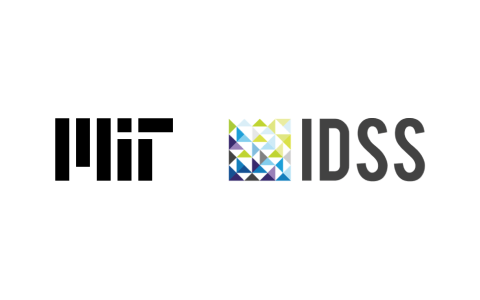Python Libraries for Machine Learning

Ratings
Level
Learning hours

Learners
Skills you’ll Learn
About this course
Python is one of the most commonly used languages for Machine Learning. It has many libraries that are both open source and available for free, which are some of its popularity. Python is a very flexible language so it can be used not only for Machine Learning but also for data analysis, scientific computing, system administration, web development, and more.
Suppose you’re getting started with Python programming or want to explore the possibilities of this great programming language even further, without any previous experience in coding or programming whatsoever. In that case, this course is for you.
Machine learning is a branch of artificial intelligence that allows a computer to learn from data and make predictions. It's been around for decades, but the recent advances in technology have made it more practical and popular. The Python programming language has many libraries that are designed for machine learning. Machine learning is applied to many domains, including natural language processing, computer vision, speech recognition, social network filtering, medical diagnosis, and data mining.
This course on Python Libraries for Machine Learning will walk you through three different libraries and the most popular libraries used in implementing Machine Learning tasks.
Check out our PG Course in Machine learning Today.
Course Outline
Ratings & Reviews of this Course
Frequently Asked Questions
Which Python library is used for machine learning?
Python has many libraries, like pandas, matplotlib, NumPy, etc. Based on the purpose, one can use the library accordingly!
Which Python library is used for AI?
Tensorflow, Keras, scikit learn, Theano, PyTorch, and pandas are common python libraries used for AI.
How many Python libraries are there?
There are over 137,000 libraries available in python
Which Python library should I learn first?
It is advised to learn either Pandas or Numpy to get started with machine learning in python.
Where Can I learn the python library for the machine learning courses for free?
Enroll in the free course provided by Great Learning to get a glimpse of Python libraries used in Machine Learning; one can also refer to the documentation!
Popular Upskilling Programs
Python Libraries For Machine Learning
Machine learning is an exciting field of computer science and statistics, and it's used in many real-world applications, from face recognition to web search ranking. This course will explore the basics of machine learning using Python and demonstrate how to visualize a machine learning problem using matplotlib.
Machine learning systems are only as good as the data they've been trained on. For example, a machine learning system could be trained with data from Facebook users to learn which friends you have in common with somebody else. This would allow the system to recommend other people you may know when you sign up for Facebook.
Machine learning is used to create models that learn from data and then make predictions for new data. For example, an algorithm might predict whether a customer will respond to a marketing campaign. Deep Learning is a subset of machine learning which involves algorithms that can learn by themselves based on huge amounts of data and without being specifically programmed to do so.
Types of Machine Learning :
Supervised learning algorithms can learn from examples with labels. It's good for classification, regression, and other tasks with labeled training instances.
Unsupervised learning algorithms try to find patterns in unlabeled data by using techniques like clustering, PCA, dimensionality reduction, neural networks with unsupervised pre-training, deep generative models.
Reinforcement Learning algorithms learn through trial and error in a problem-rich environment or simulation. It requires less data than supervised learning and therefore is more difficult to get right.
Why Python for Machine Learning?
Python is one of the most popular programming languages globally, and it's easy to see why. It's powerful, fast, and offers great features for data analysis. It also has a large community that actively contributes to its growth and development. Python can integrate with many different platforms, meaning it can be used on Macs, PCs, Linux servers, Raspberry Pi devices, Android phones, and more. The popularity of Python has made it the go-to language for machine learning projects. Machine Learning (ML) is all about making computers smarter by allowing them to learn without being programmed how to do something specific. It’s one of the hottest fields in tech right now due to its potential applications in artificial intelligence (AI). With its ease of use and expansive library of machine learning tools like scikit-learn or TensorFlow (Google’s free ML library), python is the best choice for any project involving ML.
Hence, python is one of the best languages for machine learning. The libraries available for Python, such as Scikit-learn and TensorFlow, provide state-of-the-art tools with minimal coding. You can easily build your models with this software or start with one of the many pre-trained models available online. This means you don't need to know all the intricacies of statistics, linear algebra, or calculus to make use of these amazing tools!
Pandas:
Python offers many libraries for machine learning, data analytics, and visualization. Pandas are open-source libraries that provide high-performance data structures and a massively scalable analytical framework for Python. Pandas are popular because they make working with data much easier than before. Pandas also offer a lot of functionality that was not possible before pandas libraries.
Pandas in Python is an open-source library providing data structures and operations for working with labeled data. It is one of the most popular libraries in python, mostly because it provides what other libraries do not- convenience. Pandas have many built-in methods that allow you to slice and dice your data in various ways.
Pandas in Python can be used for machine learning, data mining, statistical analysis, quantitative finance, and much more. It can also load all sorts of data formats, including Excel sheets, CSV files, JSON files, SQL databases, HTML tables.
1) scikit-learn
scikit-learn is a free set of Python modules for machine learning built on top of NumPy, SciPy, and matplotlib (for visualization). It is designed to interoperate with other python modules for math, data analysis, and visualization. The library provides a simple API for developing predictive models based on real-world data sets and artificial data sets.
This library implements methods such as k-nearest neighbor classification, Naive Bayes classifier, linear/logistic regression/discriminant analysis, Gaussian mixture model clustering, etc.
Numpy:
Machine learning is a branch of AI concerned with algorithms that automatically improve with data and without specific programming. It includes many different techniques and algorithms, and one of the most popular machine-learning algorithms is called Numpy. This library uses statistical analysis to classify data, detect patterns, and make predictions, mostly used for scientific computing in Python.
Scipy:
SciPy is a library for scientific computing used in machine learning, data analysis, and engineering.
SciPy provides numeric routines for linear algebra, optimization, integration, quadrature formulae, and much more.
Matplotlib:
Matplotlib is one of the most widely used Python modules for data visualization that John W. Shipman originally wrote in a quest to visualize a signal from a seismometer. It includes a wide range of plot types and capabilities, not just limited to 2D graphics, but also 3D graphics, GUIs, and more. Whether using the library in your math-heavy models or displaying plots in an IPython notebook, Matplotlib can help you make sense of your data.
TensorFlow :
TensorFlow is one of the most popular deep learning frameworks in the world. Keras is a great high-level neural network library for TensorFlow that simplifies building and training neural networks.
Steps to build a Machine Learning Model:
Machine Learning is an exciting field of study because it can change how we interact with technology fundamentally. A subset of Artificial Intelligence provides computers with the ability to learn without being explicitly programmed. You may be thinking, "How do I even get started?" The following are the steps that will walk you through building your machine learning model.
Creating a machine learning model can be difficult. You'll need to know what kind of data you want to use, how many features you need, the type of algorithm you want, and the size of your data set.
1) Choose A Task:
What task would you like your model to complete? This is one of the most important decisions when building a Machine Learning model, and it will dramatically impact the complexity and effort required to create your model. Some tasks include predicting customer churn, ranking web pages for relevance or quality, and classifying different types of images.
2) Data Set: This step involves gathering data on both the inputs and outputs for our task. Collecting the dataset is the heart of building a Machine Learning Model
3) Clean and explore the data set.
4)Select an algorithm - Build your model and test it.






























